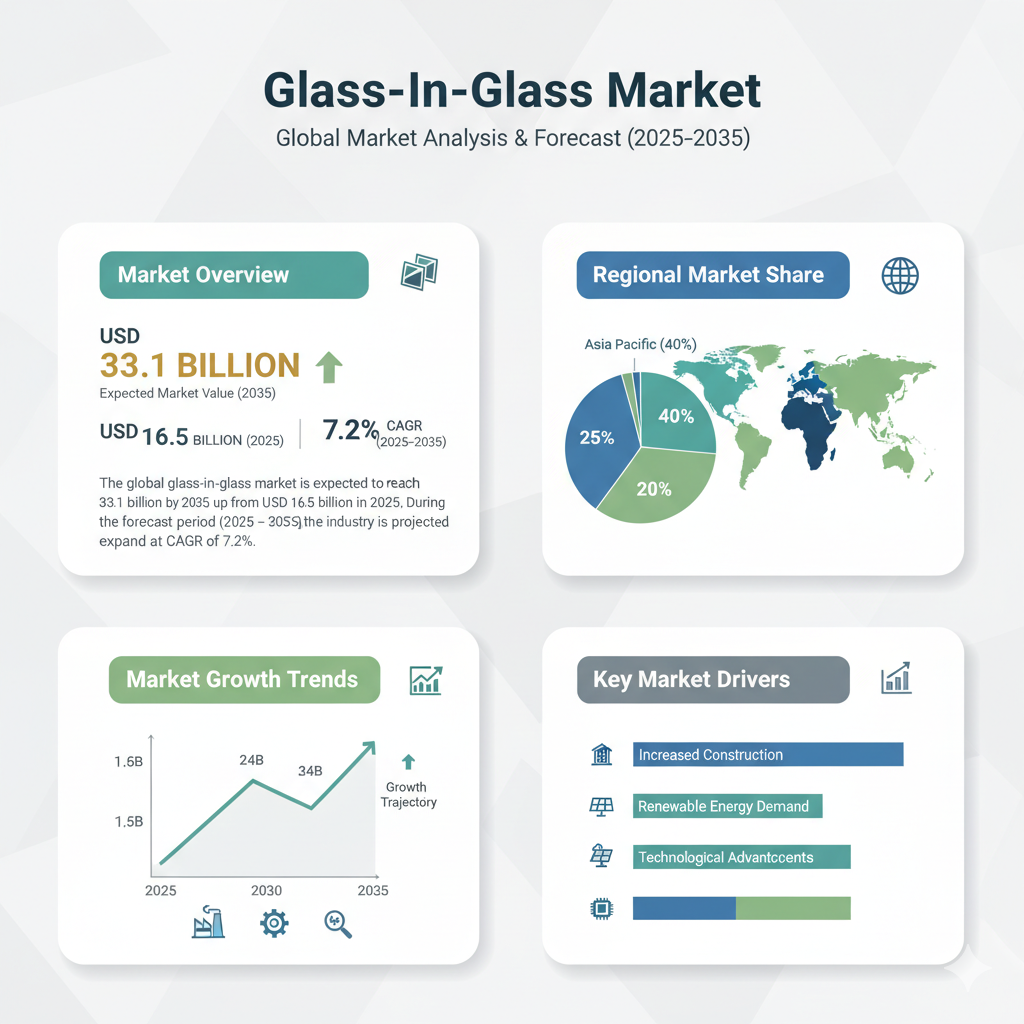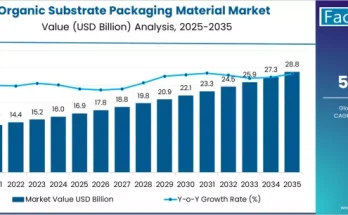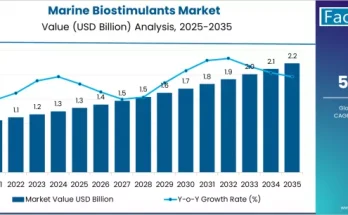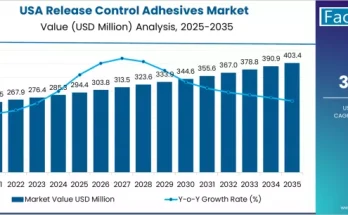According to recent estimates, the global glass-in-glass market is expected to reach USD 33.1 billion by 2035, up from USD 16.5 billion in 2025. During the forecast period (2025–2035), the industry is projected to expand at a CAGR of 7.2%, driven by rising demand from sectors such as architecture, automotive, and electronics.
Market Overview and Growth Drivers
The glass-in-glass concept involves bonding or laminating multiple glass layers using various interlayers or bonding media to achieve desired mechanical, thermal, and optical properties. The technology’s ability to combine safety, durability, and design flexibility makes it integral to modern applications — from skyscraper facades to smart devices.
Key growth drivers include:
- Increasing demand for energy-efficient and sustainable building materials.
- Expanding automotive applications such as panoramic roofs and smart glass systems.
- Rising adoption in electronics and display technologies.
- Advances in interlayer materials enhancing strength and clarity.
Moreover, rapid urbanization and infrastructure investments in emerging economies such as India, China, and Southeast Asia are expected to fuel further market growth.
Market Segmentation by Construction Type
The market is categorized into laminated glass-in-glass, fused/bonded glass-in-glass, and encapsulated/inlay glass-in-glass constructions.
- Laminated Glass-in-Glass dominates the market due to its enhanced safety and noise reduction properties, making it ideal for architectural and automotive applications.
- Fused/Bonded Glass-in-Glass is gaining traction in artistic installations and design applications, where seamless aesthetics are prioritized.
- Encapsulated/Inlay Glass-in-Glass finds use in specialty furniture, lighting, and decorative architecture, offering high aesthetic value and customization options.
Segmentation by Interlayer / Bonding Medium
Interlayer materials play a pivotal role in determining the structural integrity and optical performance of glass-in-glass assemblies. The key bonding mediums include Polyvinyl Butyral (PVB), Ionoplast (SGP), EVA, TPU/PU, Cast Resin/UV Adhesives, and No Interlayer configurations.
- PVB remains the most widely used interlayer due to its balance of flexibility, clarity, and cost-effectiveness.
- Ionoplast (SGP) is gaining preference for applications requiring superior strength, UV resistance, and edge stability.
- EVA and TPU/PU are seeing increased use in decorative and specialty products, especially in furniture and electronics.
- Cast Resin and UV Adhesives are preferred in artistic or structural glass combinations where optical clarity and minimal thickness are crucial.
Segmentation by Thickness Stack
Glass thickness combinations significantly influence performance, weight, and application. Market segmentation includes up to 12 mm, 13–20 mm, 21–30 mm, 31–45 mm, and above 45 mm stacks.
- Up to 12 mm and 13–20 mm stacks are widely used in electronics, furniture, and small architectural elements.
- 21–30 mm and 31–45 mm configurations dominate the construction and automotive sectors, balancing safety and strength.
- Above 45 mm stacks are typically reserved for structural glazing, bullet-resistant applications, and high-load environments.
Segmentation by Glass Type
Based on glass type, the market includes Float/Clear, Heat-Strengthened, Fully Tempered, Chemically Strengthened, Ultra-clear/Low-iron, Tinted, Patterned, and Specialty glass.
- Float/Clear glass remains a cost-effective and versatile option for general applications.
- Fully Tempered and Chemically Strengthened types are essential in safety and automotive applications.
- Ultra-clear/Low-iron glass is increasingly popular in luxury architecture and high-end furniture for its superior transparency.
- Patterned and Tinted glasses cater to decorative and privacy-oriented uses, while Specialty Glass includes smart, self-cleaning, and photovoltaic-integrated varieties.
Segmentation by Application
The glass-in-glass market serves diverse sectors, including Architecture & Construction, Automotive & Mobility, Electronics & Devices, and Furniture & Design.
- Architecture & Construction remains the largest application segment, fueled by the trend toward modern facades, glass bridges, and sustainable building materials.
- Automotive & Mobility applications include advanced glazing for windshields, sunroofs, and heads-up displays.
- Electronics & Devices rely on thin, durable glass for smartphones, tablets, and wearables.
- Furniture & Design uses decorative glass to blend aesthetics with structural functionality.
Regional Outlook
The market is geographically segmented into North America, Europe, East Asia, South Asia & Oceania, Latin America, and the Middle East & Africa.
- Asia-Pacific dominates the global market due to rapid urbanization, strong construction growth, and the presence of major glass manufacturers in China, Japan, and South Korea.
- Europe remains a key market for architectural and automotive glass innovations, emphasizing sustainability and energy efficiency.
- North America shows rising adoption in smart glass technologies and advanced automotive applications.
Recent Developments and Competitive Landscape
Leading companies such as Saint-Gobain S.A., AGC Inc., Nippon Sheet Glass Co., Guardian Industries, and SCHOTT AG are continuously investing in product innovation and expansion. Strategies include:
- Developing advanced interlayer technologies for improved impact resistance and UV protection.
- Expanding manufacturing capacity to meet architectural and automotive demand.
- Collaborating with designers and tech firms to integrate smart functionalities into glass structures.
Emerging competitors are focusing on custom fabrication, decorative glass integration, and eco-friendly production processes, intensifying market competition.
Conclusion
The glass-in-glass market is set for dynamic growth over the next decade, driven by technological advancements and a growing emphasis on design, safety, and sustainability. As industries continue to innovate, glass will remain not only a structural material but also a symbol of modernity, transparency, and innovation.



